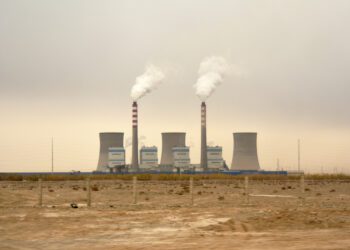Scaling breakthroughs for net zero.
Arguably the greatest innovation challenge humankind has ever faced is staring us in the face: the world has ten years to halve global greenhouse gas emissions until 2050 to reach net zero. We saw in The State of Climate Tech 2020 report how the climate tech solutions critical to enable this transformation are attracting growing investor interest.
PwC’s analysis this year explores how investors are securing both climate impact and commercial returns from this emerging asset class, helping keep the Paris Agreement’s goal of limiting global warming to below 1.5 degrees Celsius within reach.
A hot year for the climate, creating new urgency for a green recovery
The last year has seen a transformation in the venture capital landscape. New types of capital and funding mechanisms have resulted in significant new flows of investment into private markets. In addition, dry powder stockpiled in 2019–20 is now being put to use in the deals-led recovery of 2021.
The investment landscape for climate tech is no different, as society increasingly feels the impacts of climate change. The latest Intergovernmental Panel on Climate Change (IPCC) report, published in August 2021, amplified the calls for drastic action. COP26 has echoed this, and, significantly, the Glasgow Breakthroughs announcement states a plan for countries and businesses to work closely together to speed up affordable clean tech adoption worldwide.
This sharper focus on ESG in private markets, alongside emerging regulations such as European Union’s Sustainable Finance Disclosure Regulation (SFDR), is driving growth and leading many companies and investors to alter their strategies. Thousands of companies have made public commitments to net zero, set science-based targets, or sought to demonstrate their wider commitments to society through B Corp status. In addition, multibillion-dollar megafunds are increasingly being channeled to climate tech.
Climate tech scaling for impact: Trends from this year’s analysis
Investment in climate tech is continuing to show strong growth as an emerging asset class, with a total of US$87.5bn invested over H2 2020 and H1 2021 (second half of 2020 and first half of 2021), with H1 2021 delivering record investment levels in excess of US$60bn. This represents a 210% increase from the US$28.4bn invested in the twelve months prior. Climate tech now accounts for 14 cents of every venture capital dollar.
The average deal size has nearly quadrupled in H1 2021 from one year prior, growing from US$27m to US$96m. Megadeals are becoming increasingly common and are driving much of the recent topline funding investment growth in climate tech.
Innovative finance remains core to climate tech’s growth. The past 18 months have seen SPACs (special purpose acquisition companies) tested as a new tool. This new fundraising approach is responsible for driving a significant proportion of growth in climate tech, raising US$28bn in H2 2020 and H1 2021, enough to account for a third of all funding.
Mobility and Transport remains the most heavily invested challenge area, raising US$58bn, which represents two-thirds of the overall funding in H2 2020 and H1 2021. Within this, electric vehicles (EVs) and low greenhouse gas (GHG) emissions vehicles remain dominant, raising nearly US$33bn. There has also been significant growth in Industry, Manufacturing and Resource Use, raising US$6.9bn in H2 2020 and H1 2021, nearly four times the amount raised by the challenge area in the period a year prior.
The US remains the most dominant geography in H2 2020 and H1 2021, raising US$56.6bn from H2 2020 to H1 2021, nearly 65% of all funding. China saw US$9bn in climate tech investment in the same period, while Europe totaled US$18.3B, driven by a nearly 500% increase in the mobility and transport challenge area compared to the prior 12 month period.
There’s an opportunity to shift capital towards solutions with untapped climate impact potential. Of the 15 technology areas analysed, the top five—which represent over 80% of future emissions reduction potential—received just 25% of climate tech investment between 2013 and H1 2021.
Climate tech as a maturing asset class
The climate tech market is a rapidly maturing asset class, offering investors significant financial returns and the opportunity for outsized environmental and social impact. Climate technology has moved well beyond a proof of concept and our analysis finds new investors entering the market each year. Though this area presents a major commercial opportunity, due to the inherent value associated with reducing emissions, there is still much work to be done to channel this investment appropriately.
What is climate tech?
Climate tech is defined as technologies that are explicitly focused on reducing GHG emissions, or addressing the impacts of global warming. Climate tech applications can be grouped into three broad sector-agnostic groups—those that:
- Directly mitigate or remove emissions
- Help us to adapt to the impacts of climate change
- Enhance our understanding of the climate.
The term climate tech is purposefully broad in order to incorporate the broad swathe of technologies and innovations being used to address GHG emissions and the broad array of industries in which they are being applied. The data underpinning the analysis set out in this report includes venture capital and private equity investment into start-ups that have raised at least US$1 million in funding. Funding round types analysed include grants, Angel, Seed, Series A-H, and IPOs (including SPACs). Valuation data is sourced from Dealroom.co and media reports.
The data sources used have stronger coverage in European and North American markets. This analysis may therefore be a conservative estimate of the relative levels of Chinese investment and of overall investment.
Investment highlights
Following rapid growth between 2013 and 2018, climate tech investment plateaued between 2018 and 2020, as did the wider venture capital (VC) / private equity (PE) market, tempered by macroeconomic trends and the global COVID-19 pandemic.
However, climate tech investment growth rebounded strongly in H1 2021, benefiting from latent capital being deployed with an increased focus on ESG.PwC identified over 6,000 unique investors from venture capitalists, private equity, corporate VCs, angel investors, philanthropists and government funds. Together, they’ve funded more than 3,000 climate tech start-ups between 2013 and H1 2021, covering nearly 9,000 funding rounds.
Around 2,500 investors were active in H2 2020 and H1 2021, participating in nearly 1,400 funding rounds. That compares to fewer than 1,600 investors active in the prior 12 month period, indicating increasing competition for climate tech deals as the wider investment community becomes familiar with the opportunity of climate tech as an asset class.
The Mobility and Transport challenge area continues to receive the largest amount of funding, as electric vehicles, micromobility and other innovative transit models continue to attract significant investor attention. Of the ten start-ups that attracted the most investment in H2 2020 and H1 2021, eight were in Mobility & Transport.
Mobility and Transport also led in terms of growth rate, though with Industry, Manufacturing and Resource Management (IM&R) and Financial Services not far behind, each recording over 260% year-on-year growth between H2 2019 and H1 2021. In fact, only one vertical challenge area—Built Environment—recorded a growth rate below 90%, coming in at 20% growth. The horizontal challenge areas of GHG Capture, Removal and Storage and Climate Change Management and Reporting recorded YoY growth rates of 27% and 16%, respectively. Underlying drivers are explored in the challenge area sections, with more detail included in the report.
Read the full report at https://www.pwc.com/gx/en/services/sustainability/publications/state-of-climate-tech.html.












